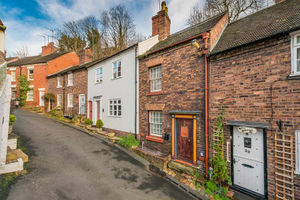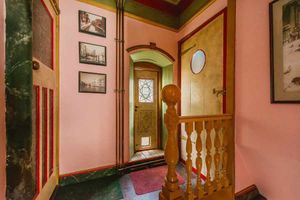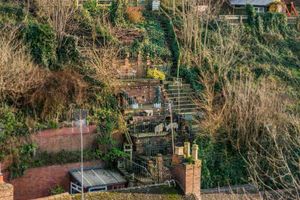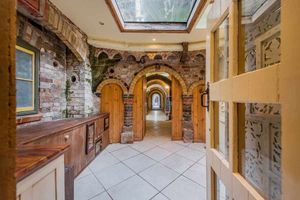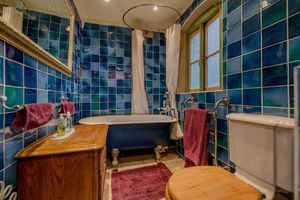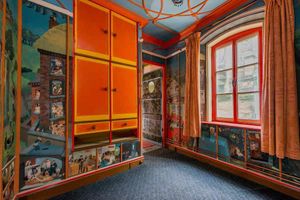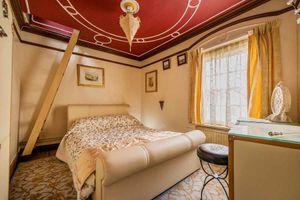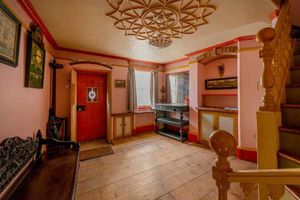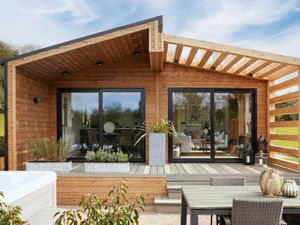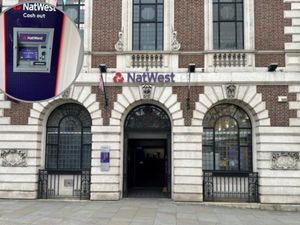Pillars and a cave: Bridgnorth cottage is a real work of art
From the outside, it looks like a simple terraced cottage on a sleepy street in Bridgnorth. But step inside and you are taken into another world, of quirky art and even a cave.
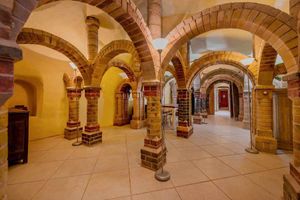
This is the creation of Antony Dracup, the home's eccentric former owner who spent years carving out a sandstone cave at the back of the house and integrating it into the main building.
The house on Railway Street is now up for sale for just under £200,000, and as well as the cave features original paintings by the artist on the walls.
The 650sq ft cave now makes up half of the house's size, after Mr Dracup moved into the house in the 1980s and spent years chiselling away and levelling floors to enable it to become part of his home.
The bricks for the archways in the cave were built from sand collected from the excavation of the cave.
On Mr Dracup's website, his son Dennis writes: "Every house that that he took up residence in received the 'Dracup treatment' - arches, pillars, balustrades, moulding; marbling, graining, varnishing, stained-glass all designed and crafted from start to finish by his hand. In Railway Street, Bridgnorth the whole house was turned around – the staircase, literally - because it better suited the layout of the upper floor.

"He began with the walls – building an extra layer of bricks inside the original one to improve insulation from noise.
"Not satisfied with the perfunctory cave in the back yard which came with the property, he set about levelling the floor and creating rooms further in.
"In true Colditz style -a little every day but persistently - he chiselled away.
"His persistence was rewarded with noticeably stronger chest-muscles and extra living space.
"The sand that was the by-product of all this carving was mixed with cement and went into home-made moulds to make bricks that would become the materials for gothic-style arches.
"As if to really demonstrate his ability to integrate the arts and sciences, more heavy engineering went into the creation of a near-vertical garden above the cave.
"By way of a ladder it was possible to access the four levels of terracing, oddly and asymmetrically designed so as to fully involve the climber in the experience -you daren't put a foot wrong here.
"Cast concrete, decorative features and moulding shared the daylight with lettuce, tomatoes an apple tree and much other edible produce. A vertical kitchen-garden which, to my father's delight, was once mistaken for a Roman Ruin in a local aerial survey."
Mr Dracup, who died in 2002, became a professional artist in 1963, after giving up a office job for Yale in London.

His works are mostly landscapes done in oils and paints - and some of the Bridgnorth countryside that he would be able to visit from his home.
Subsequent owners of the house have kept the property true to Mr Dracup's work, leaving his unique stamp on the building.
In recent years it has been used as a holiday let.
Andrew Ainge, sales manager at Nock Deighton, said: "It is unbelievable really to think that he excavated much of the cave by hand.
"The house is full of his artwork, there are hand drawn walls and the near vertical garden, it is really incredible.
"He's added 650sq ft of liveable space and it really adds something to the property, it is a beautiful living and dining area, great for entertaining.
"It came on the market last week but we've already had a lot of enquiries. We had one viewing over the weekend and some more scheduled for his week.
"It is quite quirky but if you are after something very unusual - then this is the house."
